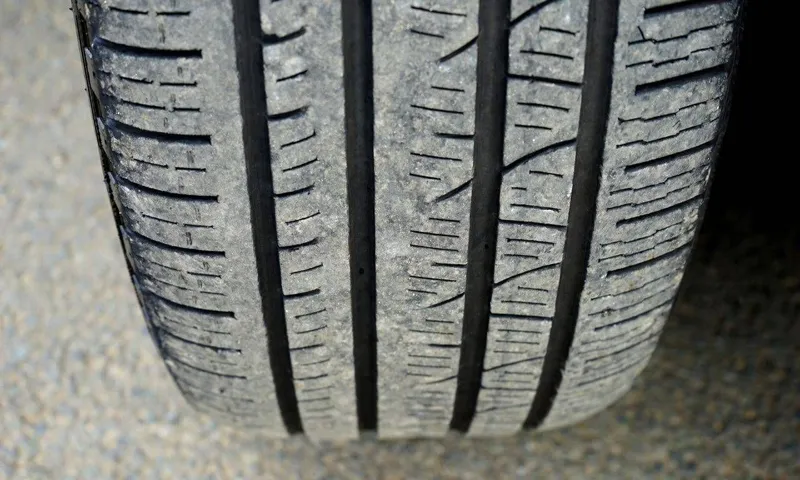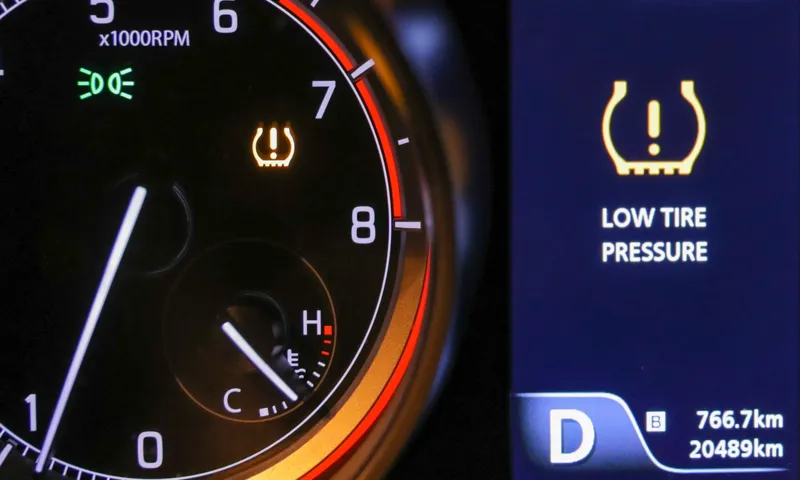Have you ever experienced your tire pressure light turning on when it’s cold outside, leaving you wondering what the heck could be going on? Well, don’t worry, you’re not alone. Many drivers have encountered this issue, and according to experts, it’s a perfectly normal occurrence. In fact, it’s so normal that many car manufacturers have taken it into account when designing their vehicles.
So why does this happen, and should you be concerned when it does? In this blog, we’re going to dive into the reasons behind this phenomenon and provide you with the answers you’re looking for. So sit back, grab a cup of coffee, and let’s get started!
Table of Contents
How cold weather affects tire pressure
If you’ve ever been driving in cold weather and noticed your tire pressure light turn on, you’re not alone. Cold temperatures can have a significant impact on tire pressure, causing it to decrease and potentially trigger the warning light. This happens because as temperatures drop, so does the air pressure in your tires.
In fact, for every 10 degrees Fahrenheit drop in temperature, your tire pressure can drop by one to two pounds per square inch (psi). So, what can you do to prevent this? It’s important to check your tire pressure regularly, especially during the colder months, and make sure your tires are inflated to the manufacturer’s recommended levels. By keeping your tires properly inflated, you can help ensure their longevity and safety on the road.
Mechanical explanation
When the temperature drops, it has a significant impact on your tire pressure. This is because the air inside the tire contracts, leading to a decrease in pressure. For every 10-degree Fahrenheit drop in temperature, there can be a reduction of one pound per square inch (psi) of tire pressure.
This decrease in pressure can affect your vehicle’s handling, braking, and fuel efficiency. That is why it is crucial to regularly check your tire pressure during the colder months. You can easily do this with a tire pressure gauge and make sure to inflate them to the manufacturer’s recommended levels.
By doing so, you ensure that your tires are performing at their best, no matter the weather conditions. Not doing so can compromise your safety on the roads and lead to tire damage, costing you more in the long run. So, it’s best to stay vigilant and keep an eye on your tire pressure levels consistently during cold weather to avoid any potential hazards.

Effects of temperature on air pressure
When the temperature drops, the air in your tires contracts, causing a drop in tire pressure. This can be a significant issue during colder months and can affect your car’s overall performance and safety. Low tire pressure can lead to reduced fuel efficiency, decreased handling and braking ability, and even the risk of a blowout.
It’s important to check your tire pressure regularly during the winter months and inflate your tires to the recommended pressure level. By doing so, you can avoid the negative effects of cold weather on your tire pressure and ensure a smooth, safe ride. Remember, taking care of your car’s tires is an essential part of keeping it running at peak performance all year round.
Why is the tire pressure light on?
Have you ever been driving on a cold morning, only to notice that your tire pressure light is on? This can be a concerning issue, but it is actually a common occurrence. As the temperature drops, tire pressure can decrease, causing the tire pressure monitoring system to alert you to a potential issue. This is because cold temperatures cause the air in your tires to contract, leading to a drop in pressure.
It is important to ensure that you have the correct tire pressure in your tires, especially during colder months, as under-inflated tires can lead to poor fuel efficiency and even tire failure. To remedy this issue, simply inflate your tires to the recommended pressure level, which can be found in your vehicle’s owner’s manual or on the door jamb. By doing so, you can avoid any potential hazards caused by under-inflated tires and ensure a safe and comfortable driving experience.
The function of the tire pressure monitoring system (TPMS)
The tire pressure monitoring system (TPMS) is a crucial component of your vehicle that ensures the safety of your driving experience. It monitors your vehicle’s tire pressure and alerts you to any changes that could be potentially dangerous. If your tire pressure light is on, it indicates that one or more of your tires may be underinflated, overinflated, or have a puncture.
Driving with underinflated tires can cause them to wear out faster and increase the risk of a blowout. Overinflated tires can also lead to uneven wear and tear, which can affect grip and handling. Therefore, it is important to take prompt action when the TPMS light illuminates.
Check your tire pressures regularly and inflate them to the recommended level. If the light still persists, you may have a puncture or a faulty sensor, which requires professional attention. In summary, the TPMS is an essential safety feature that keeps you informed about your vehicle’s tire pressure, ensuring that you stay safe on the road.
Potential causes of the warning light
If you notice your tire pressure light on, there could be a few potential causes for this warning. One common cause is simply a drop in tire pressure, which could be due to a puncture, normal wear and tear, or a change in temperature. Another possibility is a faulty sensor in the tire pressure monitoring system.
Sometimes, the light may come on due to a problem with the vehicle’s computer system. Whatever the cause, it’s important to address the issue promptly to prevent further damage or safety hazards. Keep in mind that ignoring the light could result in reduced fuel efficiency, tire wear, and increased risk of a blowout.
So if you’re wondering why your tire pressure light is on, it’s best to schedule an appointment with a trusted mechanic to get it checked out.
Tips on managing tire pressure in cold weather
If you’ve ever been puzzled by the tire pressure light on your car turning on during colder months, don’t worry, it’s a common occurrence. Cold weather can cause tire pressure to drop, leading to the warning light turning on. To manage this, it’s important to regularly check your tire pressure and adjust it if necessary, using the recommended psi for your vehicle.
Additionally, investing in a tire pressure gauge can give you accurate readings at home. Keeping your tires properly inflated can not only improve your driving experience but also help prolong the life of your tires. So, when the temperature drops, keep an eye on your tire pressure and take action if needed to stay safe on the road.
Check tire pressure regularly
Checking your tire pressure regularly is crucial, especially when temperatures drop. Cold weather can cause the air inside your tires to contract, leading to underinflation. This is a dangerous situation that should be avoided at all costs.
To manage tire pressure in cold weather, make sure to use a tire gauge to monitor the air pressure regularly. Keep in mind that the appropriate tire pressure can differ depending on the make and model of your vehicle. As a general rule of thumb, aim for a pressure of around 35 psi – this will enhance your handling and help prevent tire blowouts.
Additionally, check for any visible signs of wear and tear such as bulges or punctures, which could also be dangerous. It may also be a good idea to invest in a set of winter tires that are specifically designed to handle colder temperatures. With these simple tips, you can maintain the health of your tires all winter long and keep yourself safe on the road.
Inflate tires to the recommended pressure level
Managing tire pressure in cold weather can be challenging, but necessary to maintain optimal performance and safety. One important tip is to inflate tires to the recommended pressure level. As temperature drops, tire pressure naturally decreases, so it’s important to regularly check and adjust it accordingly.
Underinflated tires can lead to poor handling, decreased fuel efficiency, and potential tire damage. On the other hand, overinflated tires can cause a rougher ride and increase susceptibility to punctures. By keeping tires at the appropriate pressure, drivers can ensure they maintain proper contact with the road, maximizing traction and reducing the risk of accidents.
Remember, it’s better to be safe than sorry and take the time to check and adjust tire pressure before heading out in cold weather conditions.
Consider using winter tires
Winter tires are a crucial investment for drivers in colder climates. They offer improved traction and control on snow and ice-covered roads. However, it’s not just about investing in the right tires.
It’s also important to manage tire pressure in cold weather. Cold temperatures can cause the air inside your tires to contract, lowering the tire pressure. This can lead to poor handling, decreased fuel efficiency, and even tire damage.
To avoid these issues, make sure to check your tire pressure regularly and adjust it to the manufacturer’s recommended levels. Additionally, consider investing in a tire pressure monitoring system (TPMS) to keep track of your tires’ pressure in real-time. This will help ensure that your tires are properly inflated, and you can enjoy better handling and safety on the road.
Overall, managing tire pressure in cold weather is an essential component of safe and efficient driving, and it’s something that every driver should take seriously.
Conclusion – Keeping your tires healthy
It seems that our cars, just like us, can be a bit sensitive to the chilly weather. When the temperature drops, tire pressure can decrease, triggering that pesky dash light. But fear not! A quick check and refill of your tire pressure is all it takes to remedy the situation and keep your wheels rolling smoothly.
So embrace the cold and enjoy the satisfaction of being a responsible, well-maintained vehicle owner. It’s winter, baby!”
FAQs
Why does my tire pressure light turn on when it’s cold outside?
When the temperature drops, the air inside your tires contracts and causes a decrease in tire pressure. This can trigger your tire pressure monitoring system and turn on the warning light.
Can I still drive my car if the tire pressure light is on when it’s cold?
It’s not recommended to drive your car with low tire pressure, as it can cause uneven wear on your tires and potentially lead to a blowout. It’s best to check the tire pressure and inflate them to the recommended level before driving.
How often should I check my tire pressure when it’s cold outside?
It’s recommended to check your tire pressure at least once a month, and more frequently during temperature changes. When it’s cold outside, it’s best to check your tire pressure every week to ensure they are inflated to the correct level.
What is the recommended tire pressure for cold weather?
The recommended tire pressure varies depending on your car and the type of tire you have. You can find the recommended tire pressure in your car’s owner manual or on the tire placard located inside the driver’s side door.
How can I prevent the tire pressure light from turning on when it’s cold outside?
To prevent the tire pressure light from turning on when it’s cold outside, make sure to inflate your tires to the proper level during warmer weather. Additionally, consider using nitrogen instead of air to fill your tires, as it is less affected by temperature changes.
Should I adjust my tire pressure when switching to winter tires?
Yes, it’s recommended to adjust your tire pressure when switching to winter tires. Check your car’s owner manual or ask a professional to determine the proper tire pressure for your winter tires.
Can tire pressure sensors malfunction in cold weather?
Yes, tire pressure sensors can malfunction in cold weather due to low battery voltage or interference from electromagnetic waves. If your tire pressure light keeps turning on despite having the correct tire pressure, it may be time to replace the sensor.



